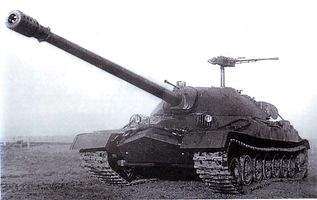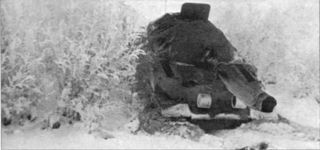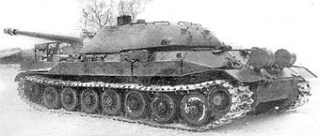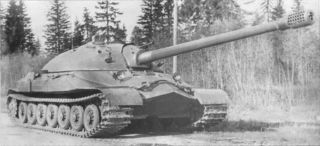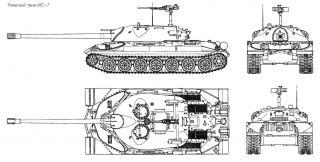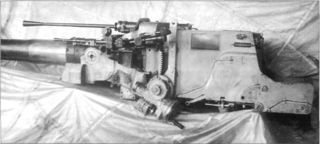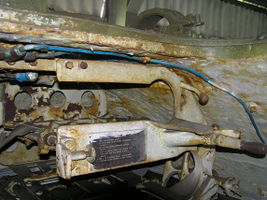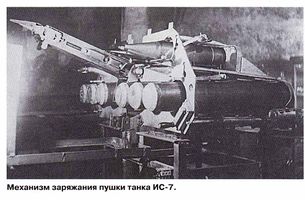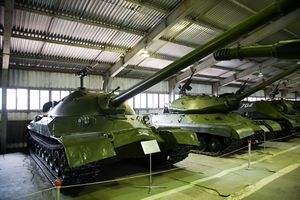IS-7
IS-7 (Stock)
| 6100000 Koszt |
| 2050 PWWytrzymałość |
| 68.19 / 70.95 Masa |
- Dowódca
- Strzelec
- Kierowca
- Ładowniczy (Radiowiec)
- Ładowniczy
| 150/150/100Pancerz kadłuba(przód/boki/tył, mm) |
| 240/185/94Pancerz wieży(przód/boki/tył, mm) |
| 1050 KMMoc silnika |
| 50 km/hPrędkość maksymalna/cofania |
| 25 stopni/sPrędkość obrotu |
| 460 damage |
| 260 mmŚrednia penetracja |
| 12.6839086243333 Czas pełnego przeładowania |
| 18 stopni/sPrędkość obrotu działa |
| 250 mZasięg widzenia |
| 500 mZasięg sygnału |

The IS-7 is a Soviet tier 7 heavy tank


Wieża
| Poziom | Wieża | Pancerz wieży (przód/boki/tył, mm) | Prędkość obrotu działa (stopni/s) | Zasięg widzenia (m) | Doświadczenie | Masa (t) |
|---|---|---|---|---|---|---|
| X | IS-7 | 240/185/94 | 18 | 250 | 0 | 14200 |
| Poziom | Działo | Średnia penetracja (mm) | Szybkostrzelność | Celność na 100 m | Czas celowania | Doświadczenie | Masa (t) | |
|---|---|---|---|---|---|---|---|---|
| X | 130 mm S-70 | 260/303/68 | 460/460/600 | 4.73 | 0.4 | 2.9 | 0 | 2980 |

Silnik
| Poziom | Silnik | Moc silnika (KM) | Prawdopodobieństwo pożaru przy trafieniu | Doświadczenie | Masa (t) |
|---|---|---|---|---|---|
| X | M-50T | 1050 | 15 | 0 | 700 |

| Poziom | Zawieszenie | Maks. obciążenie | Prędkość obrotu (stopni/s) | Doświadczenie | Masa (t) |
|---|---|---|---|---|---|
| X | IS-7 | 70.95 | 25 | 0 | 11000 |

Radio
| Poziom | Radio | Zasięg sygnału (m) | Doświadczenie | Masa (t) |
|---|---|---|---|---|
| X | _10RK-26 | 500 | 0 | 160 |
Compatible Equipment
Compatible Consumables
Player Opinion
Pros and Cons
Pros:
- Excellent armor on the front
- Spaced armor on the sides
- Nearly invincible when face hugging
- High top speed
- Excellent ability to sidescrape
Cons:
- Poor gun depression.
- Slow turning and low acceleration
- Horrible aim time AND accuracy.
- Frontal armor is tough, but relies on slope rather than thickness. If angled or shot from above front can be penetrated.
- Extraordinarily high terrain resistance in game means it will never reach its top speed on anything but downhill
Performance
It's not fast and delivers mediocre damage while being hard to kill due to its heavily sloped front armor. The IS-7 has some of the best sloped frontal armor in the game, however this is somewhat nullified at close range by the equally thick but much less sloped lower plate. All these strengths come with a weakness; the IS-7's main gun, while having the same listed accuracy as the E-100's 15cm, in practice it seems to be worse at actually hitting the target, let alone hitting a weakspot, thus requiring the player to get fairly close to their target in order to lessen the impact of its poor dispersion values. This in turn makes you a much easier target to hit as well.
However, these sloping plates also add a disadvantage: You cannot angle the frontal armour of IS-7 as you expose the well-sloped-but-weak armour plate to the enemy, the effective armour when fighting angled drops a fair amount, allowing tier 8, 9, and 10 guns to punch through if they strike at a shallow enough angle to the plate. This in turn makes your lower plate incredibly easy to penetrate as it is just as thin as the upper plate but with far worse sloping. When fighting one at an angle, prefer its flatter front armour sections than is angled side armour, or shoot the sprocket, dealing damage and throwing off the track. If fighting in an urban environment with many street corners that force you to turn to shoot you opponent, it's advised that you bait them into shooting your thick and spaced side armor by sidescraping, then returning fire as they reload. Or if your weak lower hull exposes to enemy fires, try to wiggle or shake it so that it's harder to penetrate. This can even sometime bounces tier X TD's shots.
Historical Info
Only three were built and it was the largest tank ever produced by the USSR. Although it was in many ways an innovative design, it was never accepted for mass production due to its cumbersome size and the very impractical layout of its fighting compartment. The tank housed a crew of five.
It must be noted that the Slostin gun was to be installed as its AA armament.
Historical Gallery
Sources and External Links
| Light Tanks | |
| Medium Tanks | |
| Heavy Tanks | |
| Tank Destroyers | |
| Self-Propelled Artillery |
| USA | |
| UK | |
| Germany | |
| USSR | |
| China | |
| Japan |
